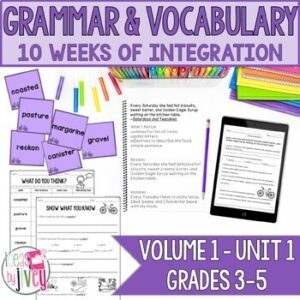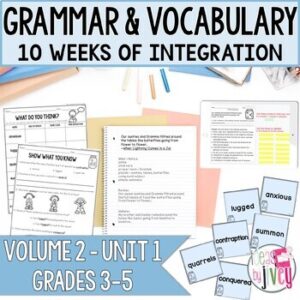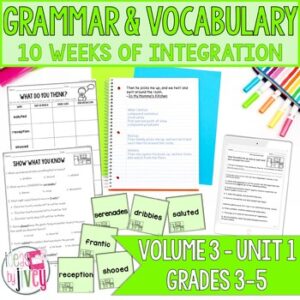Menu
Mentor sentences are the best practice routine that your students need for grammar and language skills to truly stick in writing. You read in the Day One post how to help students notice all of the good things about the mentor sentence. The purpose of Day Two is to understand the function of words in a sentence in order to communicate clearly in their own writing. On the surface, it might look just like diagramming, but you’ll see how it’s much deeper than that.
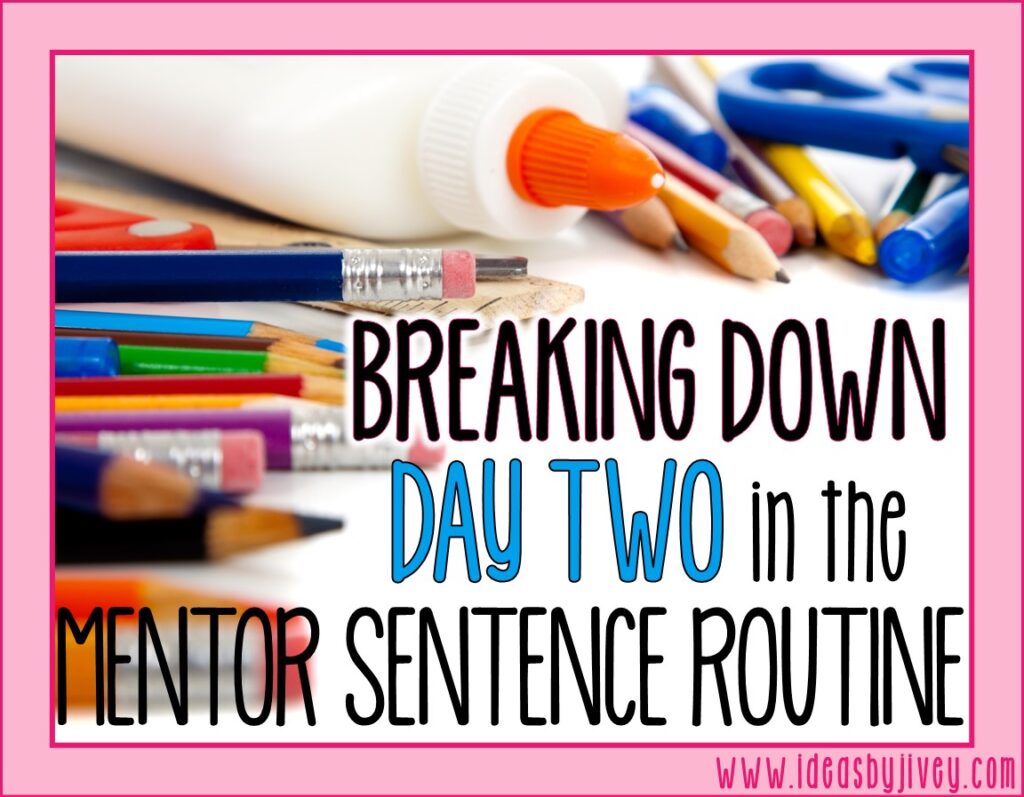
Let’s get into how to implement the mentor sentence routine in 2nd-5th grade – day two, parts of speech!
DIRECTIVE: Students will rewrite the mentor sentence into their notebook, skipping lines in between to leave room for their labels, and then label only the functions of words they KNOW. The class will participate in a discussion around what they labeled, creating a larger display from everything students share.
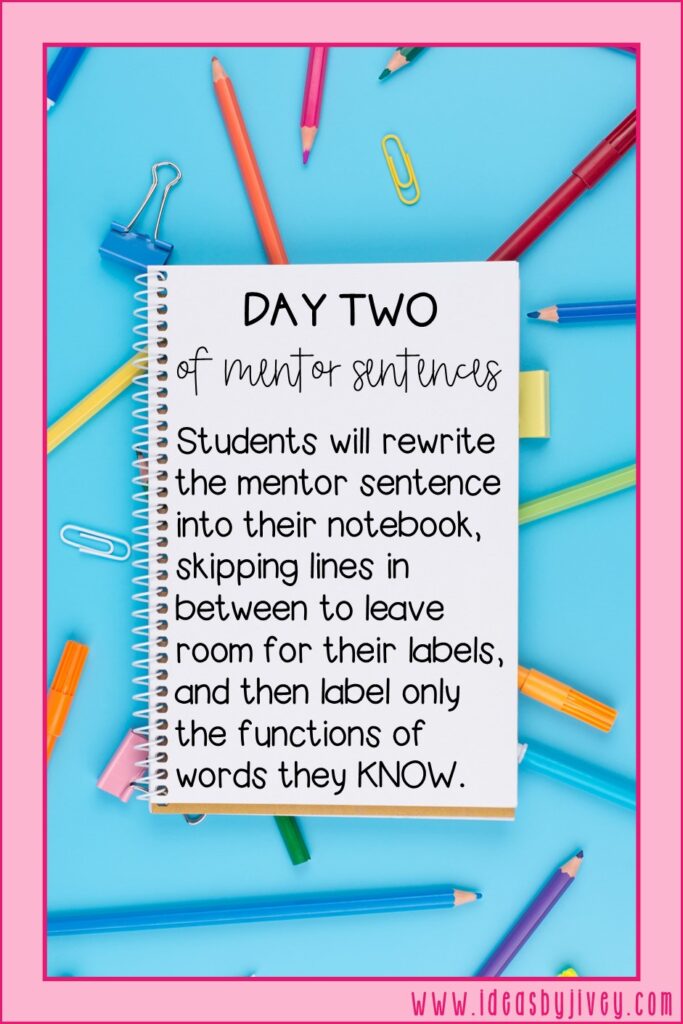 How is Day Two different than Day One?
How is Day Two different than Day One?On Day One, they might have noticed parts of speech (for example, the focus skill for this week’s lesson is amazing adjectives), but during the time to notice routine, they are looking at the sentence as a whole and identifying attributes about it. So, yes, you identified that it had adjectives, but really you were noticing that the sentence is descriptive and uses adjectives that are synonyms of each other. This is to help students understand that they should write sentences that are descriptive that don’t use the same boring word over and over, too.
On Day Two, they will be drilling down to the words and identifying their functions in the mentor sentence… so when talking about the adjectives on this day, the discussion should be around how those words are describing the nouns in the sentence.
Remember to read that mentor sentence again together. Then students are going to rewrite it, skipping lines, in their notebook.
**As mentioned in the previous day’s post, if this is the very first time that you’re ever doing mentor sentences as a class, you may want to completely skip the notebook step for this week and complete this as a class.**
I often get asked, “Is it really necessary for them to rewrite the sentence? Why not just label the one glued down?” My answer is YES, I think it is necessary, and here’s why.
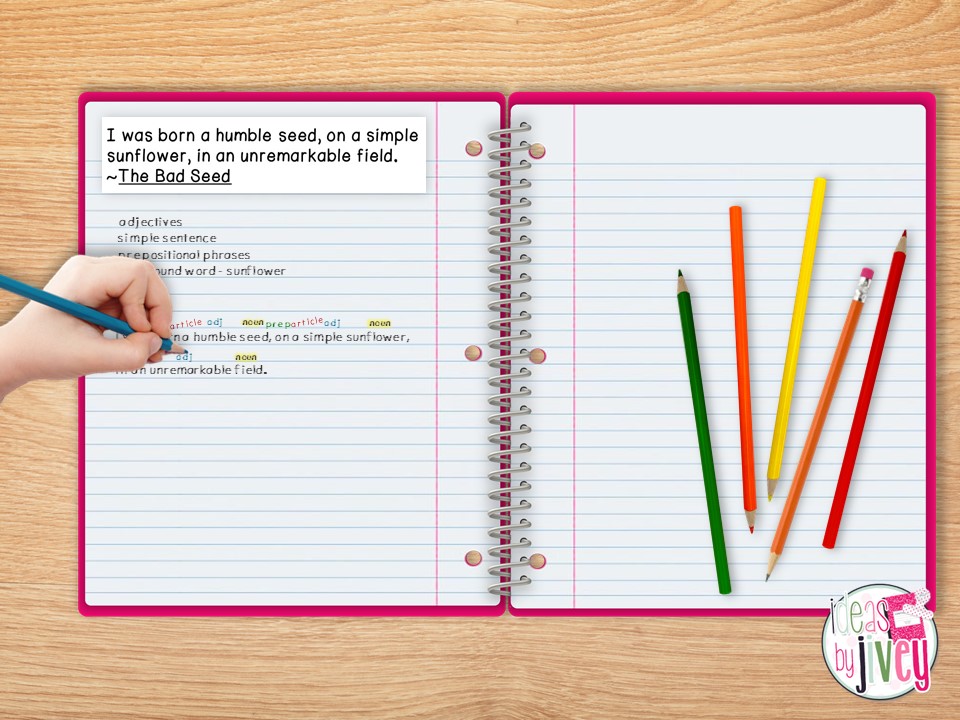
It’s so crucial that this day is built around discussion to make sure that you’re not just labeling words for the sake of labeling (i.e.; diagramming) because research has shown that it can actually be detrimental to a student’s learning. Plus, diagramming is just not necessary for the improvement of writing, which is the whole purpose of the mentor sentences routine!
In other words, it’s not a race to get every word in the sentence labeled. In fact, I would encourage you NOT to label every word at first. You want to make sure that your students feel comfortable with understanding just what you’re focusing on and not overwhelming them with every single word in the sentence.
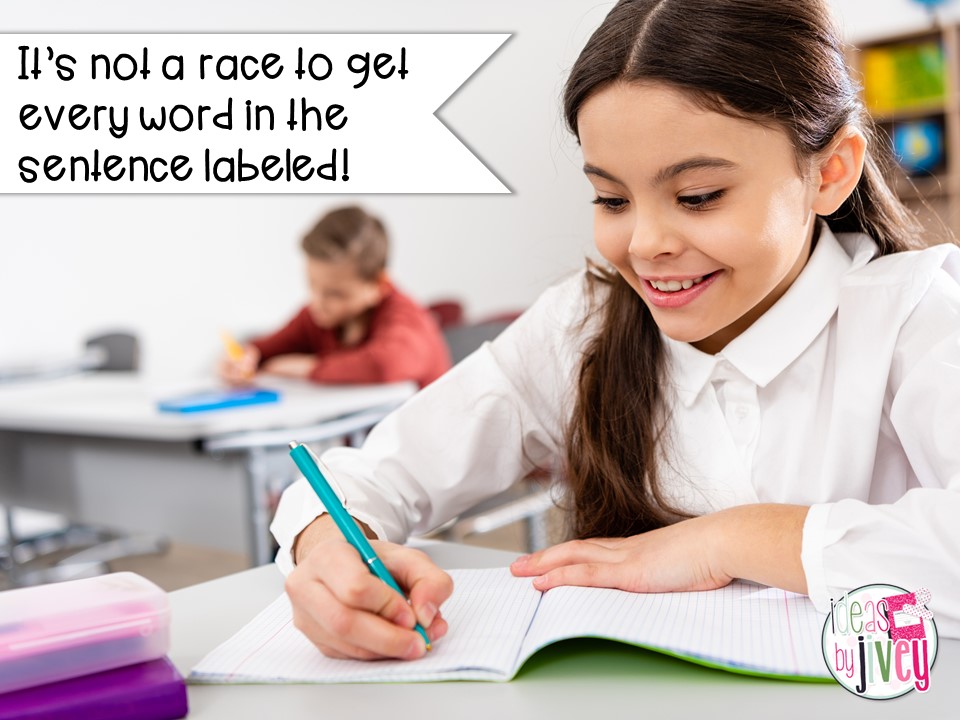
Since our focus skill in this mentor sentence lesson is adjectives, the most important “labels” this week will be adjectives and nouns. If this is the first time doing mentor sentences with students, you may want to ask leading questions to get the discussion started, like, “Does anyone see any nouns in the sentence?” Allow students to suggest words from the sentence that are nouns, but remember: the discussion shouldn’t stop after they identify the noun. Ask them how they know it’s a noun (it’s a person, place, or thing).
If you ask students to tell you a noun and still no one does, move right into modeling mode. “I know a noun is a person, place or thing. So let’s think if there are any people, places or things in this sentence. Does anybody see a place? Is there a place in this sentence? Oh, you know, I think field is a place… and so that must be a noun. I’m going to label field as a noun.” This type of modeling might feel like a Ferris-Bueller-teacher moment, but don’t get discouraged! They are soaking in how you want them to speak about the sentences, and the conversation truly won’t be one-sided when they learn the expectations of the routine.
Identifying nouns first will enable you to easily move to the adjectives. Start again by asking a prompting question, and if students still aren’t readily engaging in the discussion just yet, continue to model your thinking: “I know this word ‘simple’ is an adjective because it is describing the sunflower, which is a noun, and adjectives describe nouns.”
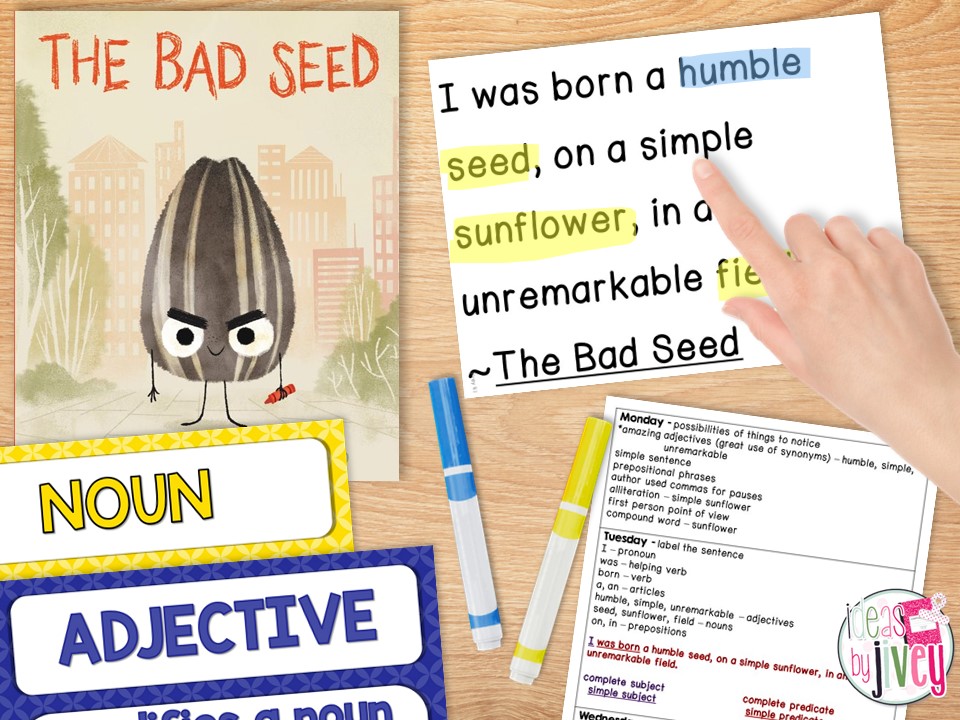
I would also be sure to discuss pronouns, as they are related to nouns. You might say, “Pronouns replace nouns. ‘I’ is replacing the seed as he talks about himself. So, ‘I’ is a pronoun.”
I’d advise you to talk about articles anytime they appear, too. I gave you some tips to talk about them in this particular mentor sentence on Day One, so you can remind them of that conversation as you look to label those words. It’s one of those parts of speech that really do not need an entire week as a focus skill, and you are able to keep reviewing it over and over since so many mentor sentences will contain at least one article. A great way to hold a discussion around it is to read it “wrong” and ask what they notice about when the article sounds “right” – the article “a” comes before consonant sounds and the article “an” comes before vowel sounds.
If students want to identify and discuss any other parts of speech, then have those conversations… but remember, in the beginning, you want to be sure students are picking up the foundational skills most of all, and you don’t want to overwhelm them.
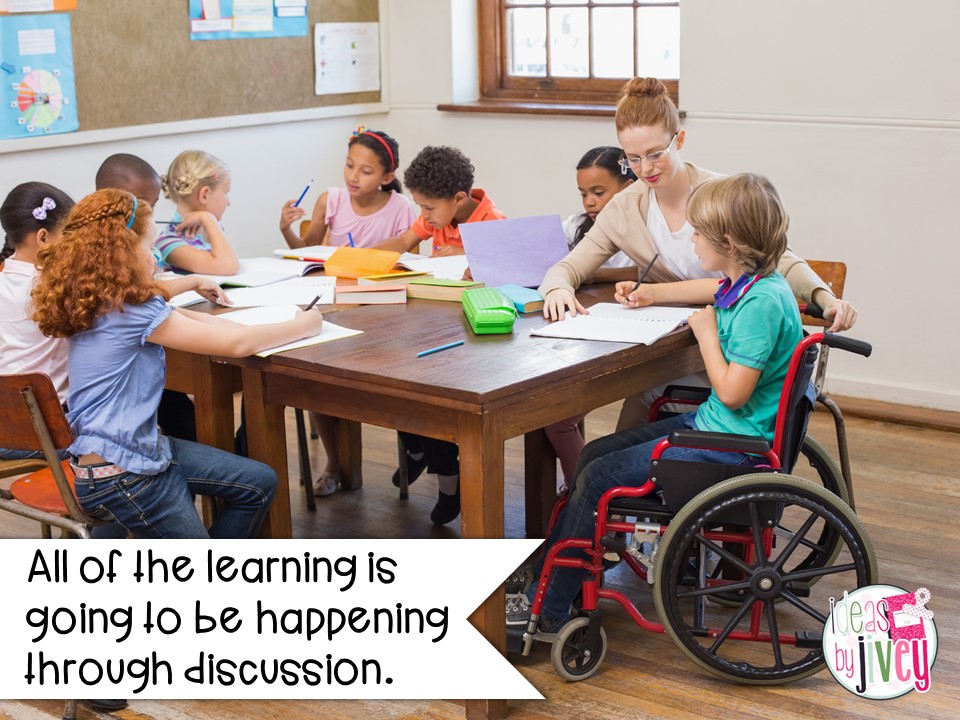
Don’t stress about labeling every single word, ESPECIALLY if it’s going to lead you to launch into mini-lessons about every other word in the sentence. The spiral nature of mentor sentences allows you to continue building skills through the weeks. Just think: every sentence every week will have nouns to identify, and there will be countless sentences that also contain adjectives. Work on adding at least one new word function each week and it won’t be long before you ARE labeling and discussing every single word!
It is not necessary to have special labels or magnetic board pieces to mark your mentor sentence parts of speech… I know they look pretty but REMEMBER, the most important part of Day Two is the DISCUSSION around how words function.
If you really wanted a set way of labeling the parts of speech, I would encourage you to look into the research-based approach of multi-sensory grammar. The set colors help students begin to see patterns in sentences, and in turn, help them grasp how the words function.
Check out these color-coded posters you can use in your classroom!
After the labeling exercise and discussion, you will move into the activity which will help carry the focus skill over into their writing.
Since the focus skill is varying adjectives in the example lesson I’ve been sharing, the students would complete an interactive activity for awesome adjectives.
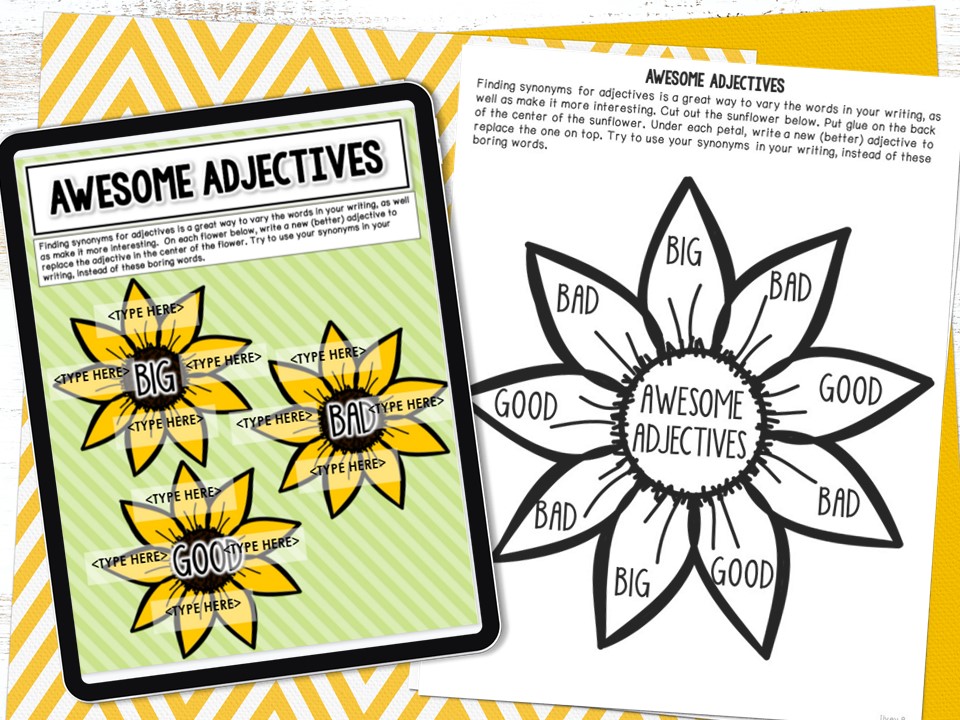
Talk about how these three words: good, bad, and big are adjectives that describe nouns, but they are a bit boring. There are a lot of other words besides good, or bad, or big, that can be used that mean the same thing but give a better visual or description.
Look back into the book for examples of what he did that was good and bad, and things that were big, and have them describe to you other ways to describe those nouns that were big, bad, and good.
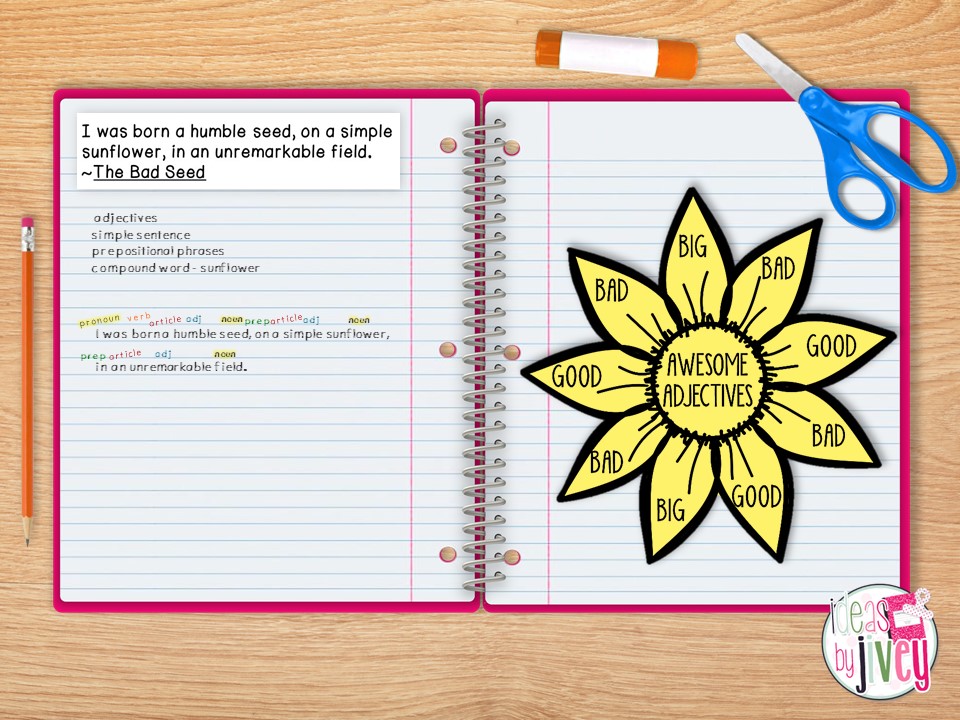
You might also bring up how the meaning can vary depending on what you’re describing. For example, in The Bad Seed, he was bad, meaning he was misbehaving. He had bad manners. He had a bad temper. A synonym for bad in this sense might be “rude.” But the word takes on a different meaning if we say something like, “That food tastes bad.” In this sense, the word might mean “rotten” or “disgusting.”
When students have completed the activity (and definitely give time to share out ideas of the words they thought of!), they will have a resource they can use for writing of ways to vary the adjectives good, bad, and big. Give students time to practice using some of these words either in sentences or by adding some adjectives into a writing piece you are completing. Anytime they see the words good, bad, or big in their own writing (even past this week’s lesson), encourage them to think of a way that they could replace those words with awesome adjectives.
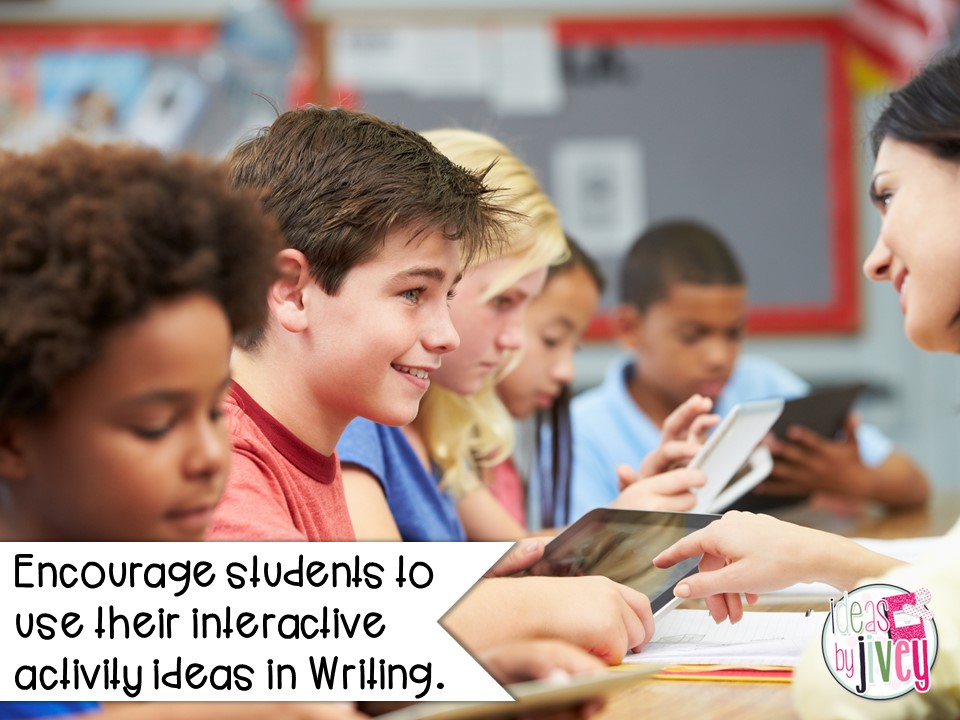
One question I always get about Day Two is, “What if they say something and it’s not right? For instance, what if they say ‘on’ is an adverb instead of a preposition?” Well, on can be an adverb, and so that’s exactly what you would say! “Well, sometimes it can be, but actually in this sentence, it’s a different part of speech.” If you haven’t taught prepositions and prepositional phrases, then you may just want to tell them, “Adverbs do tell ‘where,’ but in this sentence, this is what we call a preposition. Prepositions also tell ‘where’ and they always connect to a noun.” And then leave it at that. Remember, you don’t want to get off on a tangent away from your focus skill!
Just as I mentioned on Day One, continue talking with them about adjectives whenever they come up. Maybe you’re in a reading group and you see an adjective in the book that they’re reading together… stop and say, “Hey, I think I see a describing word. Do you see a describing word in that sentence?” This is going to help them learn how to speak about word functions (NOT just identify them). It’s also going to help them learn how to truly “notice” the good in sentences.
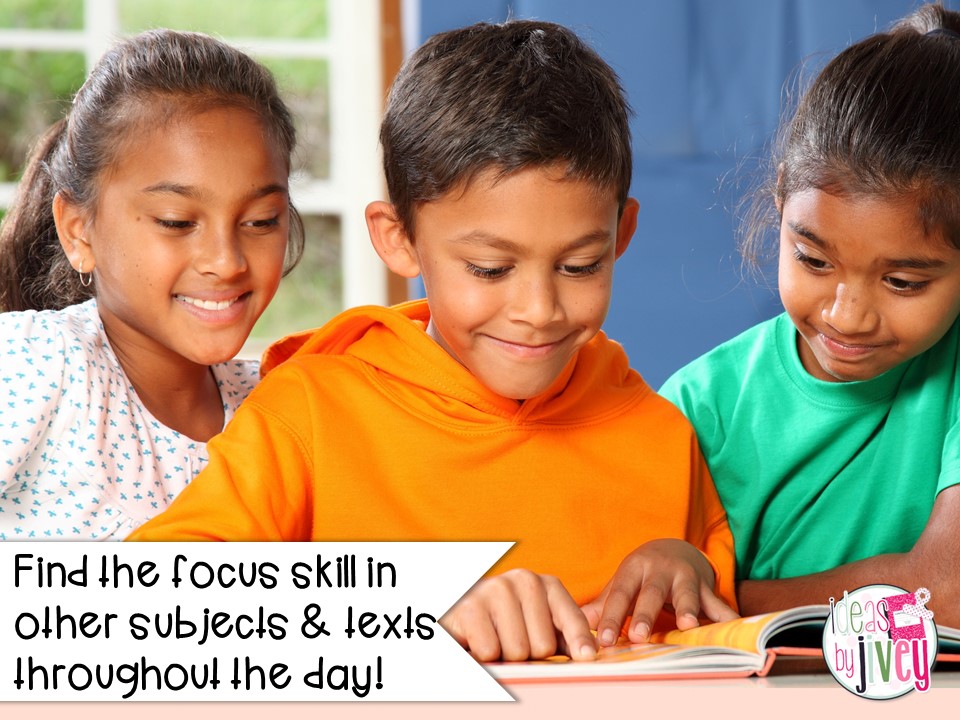
Ready to move on in the routine? Head to the next post!
